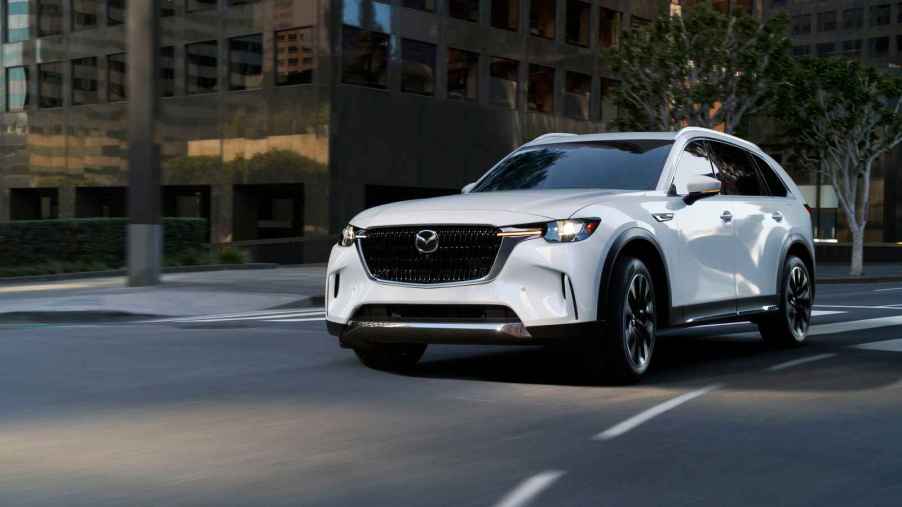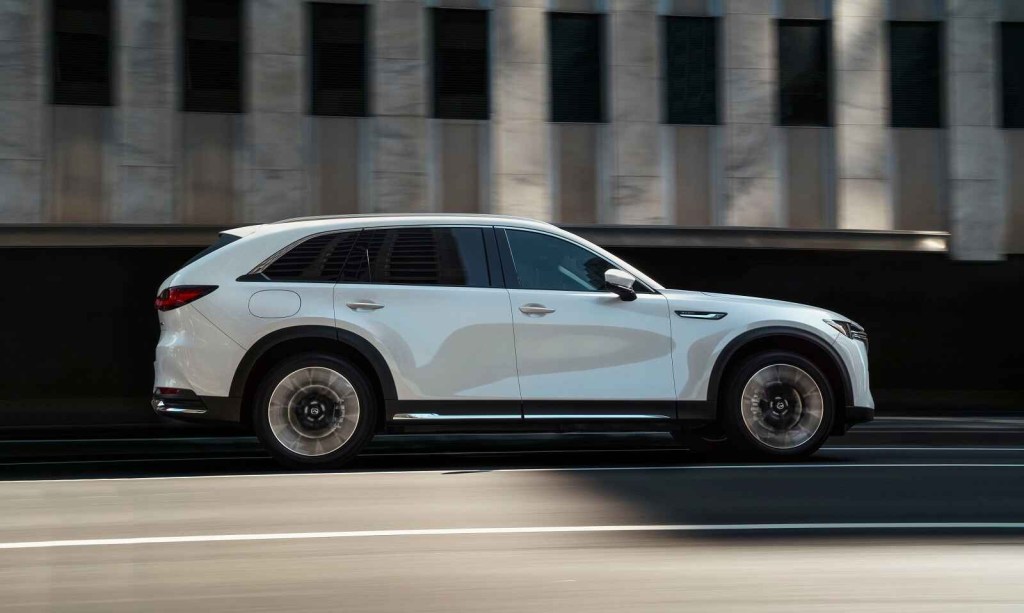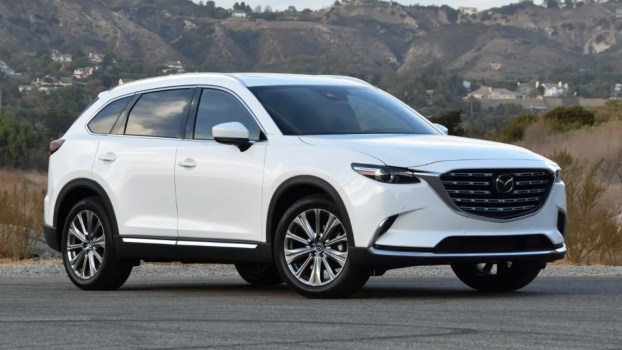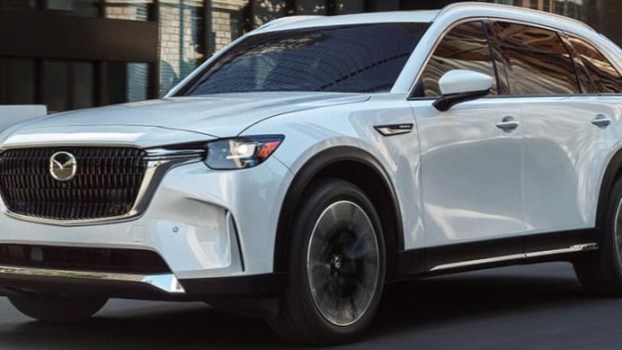
The CX-90 PHEV Is Countering Mazda’s EV Misstep
Like many automakers not named Tesla, Mazda was caught off guard in a rush to develop desirable electric vehicles. The pressure to satisfy the EV revolution is immense. Mazda’s first effort, the MX-30, was only available in California. But, the brand claimed that a national rollout was potentially forthcoming, based on consumer demand. As it turned out, there was almost no demand, and the MX-30 was quietly killed off in 2023. Now, Mazda finds itself reverting back to a safer bet. It comes in the form of hybrid and plug-in hybrid (PHEV) vehicles, like its new CX-90 three-row SUV.
Mazda’s EV failure
In some ways, it’s too bad the MX-30 got an early retirement because the tiny SUV was quite stylish. It seamlessly incorporated eco-friendly materials into its cabin design. But the fatal flaw was its skimpy range: an EPA estimate of 100 miles on a full charge.
Mazda’s halfhearted attempt at an EV isn’t surprising. The effort was basically forced by the state of California to comply with emissions laws. During the approximately three-year period that the MX-30 was available on U.S. soil, less than 600 units were purchased, with only 66 units sold in 2023, per Electrek. Presumably, it may cost Mazda less money to pay California’s penalties for noncompliance than continue to produce the slow-selling EV.
Falling back to plug-in hybrids (PHEVs) with the CX-90

Mazda’s new-for-2024 CX-90 replaces the popular, but aging CX-9 midsize SUV. By early accounts, the near-luxury CX-90 with third-row seating is a worthy successor and in keeping with current trends. There’s also a PHEV version that’s capable of traveling 26 miles on battery power alone. Then, its 4-cylinder gasoline engine kicks in.
26 miles might not seem like a long distance. The Department of Energy tells us that 79% of all car trips are less than 10 miles. The CX-90 PHEV is also 0.4 seconds quicker to 60 mph (5.9 seconds) than the hottest 340 hp ICE version. Mazda says that recharging the battery from empty takes 11 hours from a regular household 110-volt outlet or 2.5 hours from a Level 2 charger.
How much does the CX-90 PHEV cost versus the regular gasoline versions? It’s $51,320 for the base trim, called Preferred. Pricing goes up to $58,825 for the luxe Premium Plus, including a mandatory $1,375 destination fee. Compare that to a range of $40,970-$61,325 for the turbocharged 6-cylinder versions, which come in regular or the hotter “S” variant.
Also on deck from Mazda is its highly anticipated CX-70, an upmarket midsize SUV to fill the gap between the CX-50 and CX-90. By most accounts, the CX-70 will be a wider, “Americanized” version of the CX-60 that already exists elsewhere in the world. Expected sometime next year, it’ll also be available as a plug-in hybrid.
Automakers are reconsidering EVs due to costs and slow adoption
With the MX-30 now dead, Mazda isn’t presently offering any EVs in its U.S. lineup. Some sources expect that to change for 2025 based on a vague comment from Mazda North America CEO Tom Donnelly made to Automotive News. Donnelly said about the upcoming mystery EV, “It will be an existing nameplate and likely a crossover.” Donnelly also said more EVs may be added later, “Depending on consumer demand.”
Initially, electric vehicles experienced exponential sales gains. Between 2017 and 2022, the number of EVs sold in the U.S. skyrocketed from approximately 65,000 to over 800,000 annually, per the BBC. But there’s an expression in the financial world that “past performance is not indicative of future results,” and that mantra is starting to hold true for EV sales, which lost momentum later in 2023.
After an initial rush of early adaptors, the public has more recently been slow to embrace EVs. Even with various state and federal incentives in place, consumers are struggling with the lofty price tag of many EVs. Especially considering that car loan interest rates have spiked as a byproduct of the Federal Reserve’s fight against inflation.
Besides range anxiety and sticker shock, some consumers may find charging at home to be a challenge. Examples of that include folks living in rental homes or apartments without a charger — or the electrical capacity to install one — as well as drivers who park their vehicles on the street overnight.
Once again, referencing comments from Mazda executive Tom Donnelly, “Plug-in hybrid is the right technology for the marketplace today, given any number of challenges in terms of infrastructure and everything else. We’re committed to an electrified future, but for the near term, we feel like we have the right technology.” Increasingly, it seems like rival automakers are in agreement.





